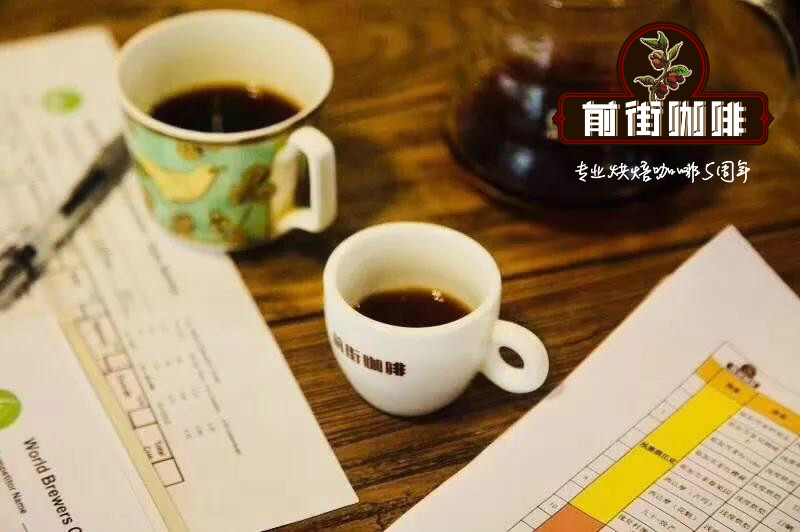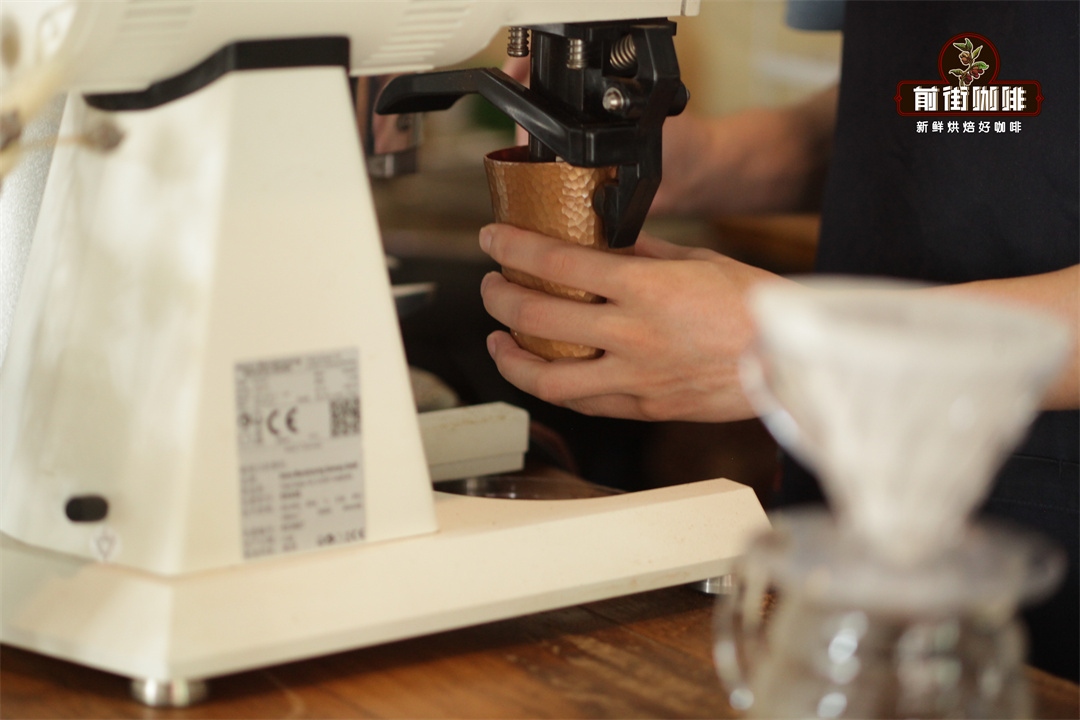What is the effect of coffee grinding degree on taste? How does the size of coffee powder affect the flavor? (below)

Professional coffee knowledge exchange more coffee bean information please follow the coffee workshop (Wechat official account cafe_style)
The right thickness makes the coffee tastier.
And grinding too rough or too detailed will make the coffee bitter, astringent and sour.
So how do we adjust? What other factors will affect it?
Can the grinding thickness be universal?
The ideal grinding thickness depends on many factors:
Coffee beans: since coffee has so many flavors, when you buy new coffee beans, you have to adjust the grinding settings to give play to the best flavor of this bean.
Cooking utensils: different cooking utensils may adapt to different grinding thickness. For example, espresso is finely ground, while French filter pots usually use thicker grinding to achieve the best results.
There are many reasons for these differences. The French filter press is a kind of soaked coffee, which takes a long time to brew, usually about four minutes, when the thicker grinding slows down the release of the substance. Espresso, on the other hand, is brewed for a short time, usually about 20-30 seconds, and uses pressure to force hot water through the high-density coffee pressed powder, making it suitable for fine grinding.
Baking date: don't forget that coffee is a crop. Coffee, like bread or milk, has its best taste. When the beans are roasted, they begin to decay and lose their flavor. in order to make up for the decline of flavor, the thickness can be adjusted. First of all, you can increase the amount of coffee powder and thicken the grinding a little bit, so that you may be able to give full play to the flavor of coffee beans that have been in place for some time.
Baking degree: different baking degrees affect not only the flavor of the extraction, but also the rate of substance release during extraction. Deep-baked beans will absorb water because of their long baking time and low moisture content, which means that the extraction speed will be accelerated. Generally speaking, coarser grinding for deep baking and finer grinding for shallow baking are recommended.
Grinding thickness: the key to creating a formula
If grinding thickness is only one of the many factors affecting extraction, why do we pay so much attention to it? Because it can be said to be the most influential factor.
The grinding thickness is easy to control and is the main source of coffee flavor. Of course, there are many other factors that will affect the final extraction results, but the grinding thickness is easier to adjust and replicate than other factors.
In addition, the grinding thickness will also affect other factors. The cooking time is the time after the water flows through the coffee powder and through the filter material, so the thickness of the grinding will affect the time of the water flow. Imagine a cup of sand and a glass of pebbles, and pour the same amount of water in two cups at the same time, you will see that the water in this cup of sand will flow more slowly.
This means that the test elasticity of the grinding thickness is lower than that of the water temperature. The thickness of the error will have a huge negative impact on the quality of coffee.
In addition, if hand-brewing and large-scale brewing are used, the grinding thickness will affect the disturbance of the water, and how much coffee powder will be taken away by the water during brewing? The spoiler will also have a significant impact on the extraction.
You will want all the coffee powder to be extracted to the same extent, or as consistent as possible, in order to maintain the quality of the coffee and replicate the flavor. This means that the contact time between powder and water must be the same.
A slight disturbance is a good thing, which drives the coffee powder and ensures that the water is in full contact with the powder. However, when you cook, you do not want the disturbance to push up the powder layer, so that the powder that forms a powder wall on the side of the filter cup cannot be fully extracted. This will cause the coffee to smell sour, which, unfortunately, is more likely to happen when you grind it more finely.
The wrong grinding thickness can not be made up only by adjusting other factors, because it will affect many other factors, once you confirm the powder-to-water ratio of coffee, then confirm the grinding thickness. If you want to hand-brew or make a lot of coffee, this will help you adjust the brewing time. After that, the attention will focus on the water temperature, disturbance and other factors.
Help improve grinding
You already know how much impact proper grinding can have, but how can you be sure that the thickness of the grinding is accurate?
First of all, remember that the stability of grinding is the key. If the thickness of this coffee powder is uneven, there will be different extraction rates, resulting in an unpleasant flavor. Even if this cup of coffee tastes good, it is difficult to reproduce the beautiful flavor, and the stability and quality of grinding are very important.
But it's not enough to buy good equipment. You have to keep the machine in good condition. The condition of the grinder is mainly affected by maintenance and cleaning habits, so make sure the grinder is cleaned regularly and replace the cutter head when needed (also consider the manufacturer's advice).
When you choose the correct grinding configuration, make sure that the grinding thickness matches the way you brew, match the beans you brew, figure out the thickness you think is appropriate, and make sure that the recipe is recorded. Then taste the coffee and record how you feel.
If the coffee doesn't taste as expected, adjust only one parameter on the bean grinder at a time, and don't move anything else. Of course, some bean grinders have more adjustable settings, so as to make it easier and easier to control when you adjust. But no matter how you adjust, remember exactly what degree of grinding you use to ensure that this practice can be replicated in the future.
The thickness of grinding has a great influence on the flavor of coffee, and it is very difficult to control it completely, but fortunately, as long as you can understand its logic, it will be very easy to use.
The easiest way to find the right grinding setting is to test, taste, and record what you drink, adjusting only one factor at a time until you find the best combination.
Important Notice :
前街咖啡 FrontStreet Coffee has moved to new addredd:
FrontStreet Coffee Address: 315,Donghua East Road,GuangZhou
Tel:020 38364473
- Prev

The effect of Grinding degree of Coffee Powder on Flavor how to determine the Grinding degree of hand pressing and Cold extraction
Professional coffee knowledge exchange more coffee bean information please follow the coffee workshop (Wechat official account cafe_style) Coffee is bitter? So sour? Everyone wants to drink good coffee, sweet and palatable, with explosive aroma and long aftertaste, and hope to drink this kind of coffee every time. There are many factors that affect the taste of coffee: time, temperature, brewing equipment, etc.
- Next

What kind of milk is best added to coffee? What kind of milk tastes good with coffee?
Professional coffee knowledge exchange more coffee bean information please follow the coffee workshop (Wechat official account cafe_style) when your coffee was baked? What kind of treatment? What baking degree? I'm sure people who make coffee must have a way to answer these questions. But if you are asked about the milk you use, you may not be able to answer directly. You have to look at the label on the package. When coffee
Related
- What is the Philharmonic pressure? How to use Philharmonic pressure to make delicious coffee
- Why does a hand grinder have more fine powder than an electric grinder?
- In addition to the hot mom, what is the difference between the versions of EK43 | ditting and Mahdi ek43?
- What kind of equipment do you need to make coffee by hand? Introduction to novice starter cooking equipment tools
- Espresso needs to be ground how thick and thin scale entry Italian Coffee Machine Bean Grinder investigation and Grinding course
- How much does it cost to open a small private cafe? How much does it cost to learn coffee? How to operate it?
- The difference between the flavor characteristics of hand-brewed coffee and coffee maker is hand-brewed coffee really better than coffee maker? Can I use a coffee machine to make coffee beans by hand?
- The difference between 01 and 02 of hario v60 filter cup what is the difference between 01 and 02 filter cup opening and cooking flavor
- What's the difference between the smart cup and the French kettle? Which is better, the French kettle or the Smart Cup?
- What's the difference between a smart cup and a V60 filter cup? The difference between the taste of smart cup and hand-brewed coffee

